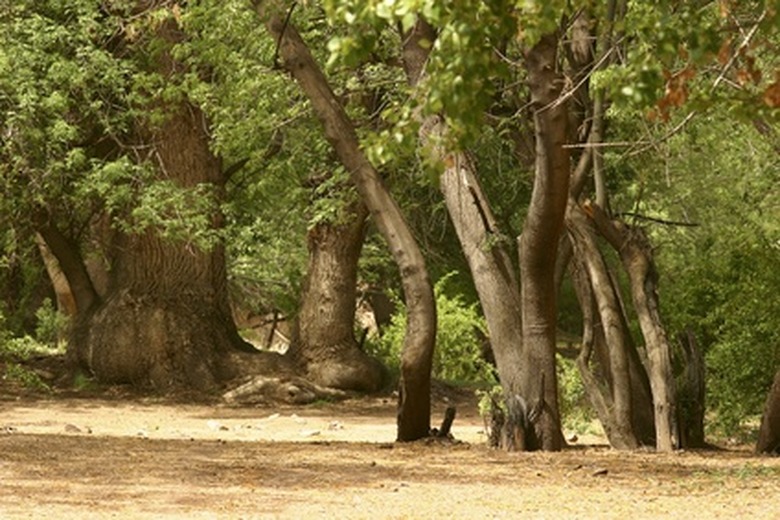The Lifespan Of Ash Trees
Ash is the common name for the Fraxinus genus of trees in the Oleaceae family of plants that includes olive and lilac. There are 45 to 65 species, including white ash, Biltmore ash, European ash and black ash. They are large, deciduous trees distinguished by their opposite branching habit and pinnately (feather-like) compound leaves. Bark and leaf color differ by species.
Seeds
Ash tree seeds are one-seeded nutlets with elongated wings called keys. Ash trees are 30 to 40 years old before they bear flowers and seeds. The Fraxinus excelsior species of ash has compact clusters of flowers that open in May before leaf bloom. Female flowers produce seeds that ripen into pale green keys by late summer. They dry to brown by late autumn and are distributed on wind to germinate in open ground.
- Ash is the common name for the Fraxinus genus of trees in the Oleaceae family of plants that includes olive and lilac.
- The Fraxinus excelsior species of ash has compact clusters of flowers that open in May before leaf bloom.
Saplings
Ash are fast growing to their expected lifespan of 200 to 300 years. They thrive in full sunlight, growing more slowly in shaded areas. Young saplings tolerate wind and atmospheric pollution. The branches develop in opposite pairs from the trunk, similar to maple and dogwood trees. Branches continue to form in opposite pairs as the sapling develops. The branches are round with budding on opposite sides. Bark color varies with the species, from light gray shaggy textured to smooth brown or grayish-brown. The bark of black ash is scaly and crumbles easily when rubbed with the palm of the hand.
- Ash are fast growing to their expected lifespan of 200 to 300 years.
- The branches develop in opposite pairs from the trunk, similar to maple and dogwood trees.
Environment
The white ash, Fraxinus Americana, grows well in heavy, clay-like soil. It reaches an average height of 50 to 80 feet and its trunk diameter is 2 to 3 feet. This common American ash tree does well near streams and lower slopes and is sensitive to drought conditions. Its leaves are 8 to 12 inches long, opposite and sharp-pointed. Foliage is dark green above with a pale green underside, becoming brown and purplish during autumn.
Mature Ash
Mature ash trees begin reproducing after 30 to 40 years. The tree is home to woodpeckers and nuthatch birds. Ash wood is one of the strongest hardwoods, used by early cultures for baskets and tool handles. Ash is an elastic hardwood that can be shaped easily. Today, ash wood is used to make furniture, sport equipment and aircraft parts.
- The white ash, Fraxinus Americana, grows well in heavy, clay-like soil.
- This common American ash tree does well near streams and lower slopes and is sensitive to drought conditions.
Insects
Common insect problems for ash trees include the ash sawfly, ash borer and oystershell scale. The ash borer develops underneath the bark area and cannot be seen unless bark is removed. Trees that are injured or weak are most susceptible to attack. Ash trees should be fed with organic compost bi-annually to help prevent attack from borers and other insect pests.
